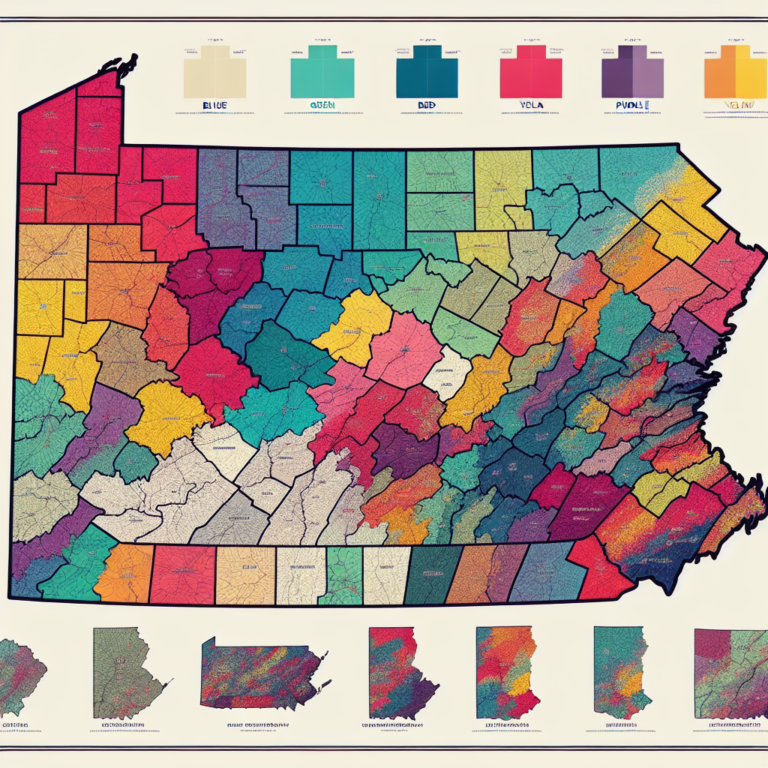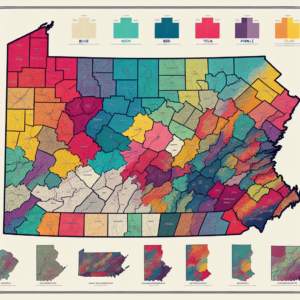Geographic Information Systems (GIS) have profoundly transformed the way we perceive and interact with our environments, offering an unparalleled level of detail and insight into geographic and demographic data. The Worth County GIS is an invaluable resource that provides access to a wealth of spatial data, serving diverse applications ranging from urban planning to environmental management. This comprehensive guide delves into the nuances of Worth County GIS, elucidating its functionalities, applications, and benefits to residents, businesses, and governmental agencies alike.

By understanding the capabilities of GIS, stakeholders can make informed decisions that promote sustainable growth and enhance community resilience.
Understanding GIS: A Brief Overview
GIS is a technology that enables users to visualize, question, analyze, and interpret data to understand relationships, patterns, and trends in the form of maps, globes, reports, and charts. By integrating hardware, software, and data, GIS captures and manages spatial or geographic data. The Worth County GIS system is a robust platform that supports decision-making processes across various sectors, offering a comprehensive view of spatial relationships and patterns that might otherwise go unnoticed.
The Core Components of GIS
The effectiveness of GIS is anchored in its core components: hardware, software, data, people, and methods. Each component plays a crucial role in ensuring that the system functions optimally to deliver accurate, timely, and reliable information.
- Hardware: This includes the computers and servers that run GIS software. In Worth County, these systems are meticulously maintained to ensure high performance and availability, supporting the seamless operation of complex spatial analyses.
- Software: GIS software enables the storage, analysis, and visualization of spatial data. Worth County utilizes state-of-the-art GIS software designed to handle complex datasets, ensuring that users can perform intricate queries and generate detailed visualizations.
- Data: The lifeblood of GIS encompasses spatial data (maps and imagery) and attribute data (descriptive information about spatial features). Worth County’s GIS database is rich with diverse datasets, ranging from topographical maps to demographic statistics, providing a comprehensive view of the county’s landscape.
- People: Skilled personnel are essential to operate and manage GIS effectively. Worth County employs trained GIS professionals to oversee the system, ensuring that data integrity is maintained and that users receive the support they need to harness the full potential of the platform.
- Methods: These are the procedures and techniques applied to data to solve specific problems. Worth County has established rigorous methodologies to ensure data integrity and usability, enabling users to derive meaningful insights from their analyses.
Worth County GIS: A Vital Tool for Local Governance
The Worth County GIS platform is a pivotal resource for local governance, enhancing the capabilities of various county departments. It offers numerous applications that facilitate efficient service delivery and informed decision-making, ultimately contributing to the well-being and prosperity of the community.
Applications in Urban Planning and Development
In the realm of urban planning, GIS is indispensable. Worth County GIS provides planners with detailed maps and data that aid in zoning, land use planning, and infrastructure development. By overlaying various datasets, planners can assess the impacts of proposed developments and ensure sustainable growth. This ability to visualize and analyze spatial data enables planners to make informed decisions that balance development needs with environmental conservation and community interests.
Moreover, GIS allows urban planners to simulate different development scenarios, providing insights into potential outcomes and helping to identify optimal solutions. By using GIS to analyze factors such as traffic patterns, population density, and public service accessibility, planners can design urban environments that are both efficient and livable. This proactive approach to urban planning helps mitigate potential issues before they arise, fostering a more harmonious relationship between built and natural environments.
Environmental Management and Conservation
GIS plays a critical role in environmental management. Worth County utilizes GIS to monitor natural resources, track environmental changes, and implement conservation strategies. For instance, GIS can help identify areas prone to flooding, enabling proactive measures to mitigate risk. By mapping habitats and ecosystems, environmental managers can better understand the distribution of species and the impacts of human activities, facilitating targeted conservation efforts.
Furthermore, GIS supports the development of environmental policies by providing data-driven insights into issues such as land degradation, pollution, and climate change. By leveraging GIS technology, Worth County can prioritize resource allocation and implement effective conservation measures that preserve biodiversity and promote sustainable use of natural resources. This strategic approach not only protects the environment but also enhances the quality of life for residents.
Enhancing Public Safety and Emergency Response
Public safety agencies benefit immensely from GIS technology. Worth County GIS supports emergency services by providing real-time data during crises, helping coordinate response efforts more effectively. Mapping tools enable responders to visualize incident locations, access routes, and resources swiftly, ensuring that help reaches those in need as quickly as possible.
In addition to emergency response, GIS is instrumental in disaster preparedness and risk assessment. By analyzing historical data and modeling potential scenarios, public safety agencies can identify areas at greatest risk and develop contingency plans accordingly. This proactive approach enhances community resilience and minimizes the impact of disasters, safeguarding lives and property.
Accessing Worth County GIS: A User Guide
Accessing the Worth County GIS system is straightforward, though understanding the interface and capabilities can significantly enhance the user experience. Here’s a step-by-step guide to navigating the platform, empowering residents and businesses to make the most of this valuable resource.
How to Access the GIS Portal
Residents and businesses can access the Worth County GIS portal via the county’s official website. The portal provides an interactive map viewer that allows users to explore various layers of geographic information.
- Visit the Worth County Website: Navigate to the GIS section, where you’ll find resources and tools designed to help users access and utilize spatial data effectively.
- Launch the GIS Viewer: This interactive tool lets you explore maps and datasets, offering an intuitive interface that makes it easy to zoom in on areas of interest and analyze specific features.
- Select Layers: Users can choose from a variety of layers, such as property boundaries, zoning districts, and topographic maps, providing detailed insights into the county’s geography and land use.
- Analyze Data: Use the analytical tools to query data, measure distances, and generate reports, enabling users to perform complex analyses and derive valuable insights.
Data and Tools Available
The Worth County GIS portal offers a myriad of data layers and analytical tools tailored to meet diverse needs. These include:
- Property Information: Access detailed property records, including ownership, valuation, and parcel boundaries, providing valuable information for real estate transactions and property management.
- Zoning and Land Use: View zoning classifications and land use patterns across the county, aiding planners, developers, and residents in understanding regulatory constraints and opportunities.
- Environmental Data: Explore data on natural resources, conservation areas, and environmental hazards, supporting efforts to protect the environment and promote sustainable development.
The Future of GIS in Worth County
As technology evolves, so too does the potential of GIS. Worth County is committed to expanding its GIS capabilities, incorporating advanced technologies such as artificial intelligence and machine learning to enhance data analysis and visualization. These advancements promise to unlock new possibilities for understanding and managing spatial data.
Innovations and Upgrades
Worth County plans to integrate 3D mapping and augmented reality into its GIS platform, offering users an immersive experience that provides deeper insights into spatial data. These innovations promise to revolutionize how planners and citizens interact with geographic information, enabling more dynamic and interactive analyses that enhance decision-making.
Additionally, the integration of machine learning algorithms can automate data processing and pattern recognition, enabling more efficient and accurate analyses. By harnessing the power of AI, Worth County can streamline its GIS operations and provide users with more sophisticated tools for exploring and interpreting spatial data.
Community Engagement and Education
Educating the public about the benefits and uses of GIS is crucial for fostering community engagement. Worth County aims to conduct workshops and seminars to raise awareness and encourage residents to leverage GIS in their personal and professional endeavors. By empowering citizens with knowledge and skills, the county can build a more informed and engaged community.
Furthermore, Worth County plans to collaborate with local schools and universities to integrate GIS education into curriculums, inspiring the next generation of GIS professionals and enthusiasts. By promoting GIS literacy, the county can ensure that its residents are well-equipped to utilize this powerful technology in ways that benefit both individuals and the community as a whole.
Conclusion
The Worth County GIS system is a powerful tool that transforms complex data into actionable insights, supporting a wide array of applications from urban planning to emergency management. By embracing this technology, Worth County not only enhances governmental operations but also empowers its citizens with valuable information. As GIS continues to evolve, its role in shaping the future of Worth County is undeniably significant, paving the way for smarter, more sustainable communities. By investing in GIS technology and education, Worth County is poised to become a leader in spatial data management and application, driving positive change and fostering a brighter future for all its residents.










